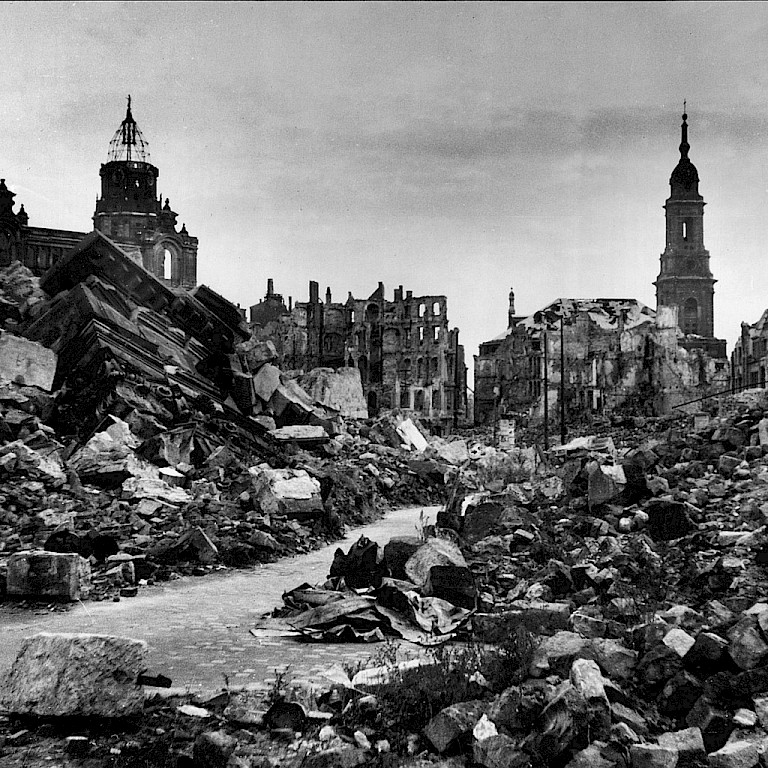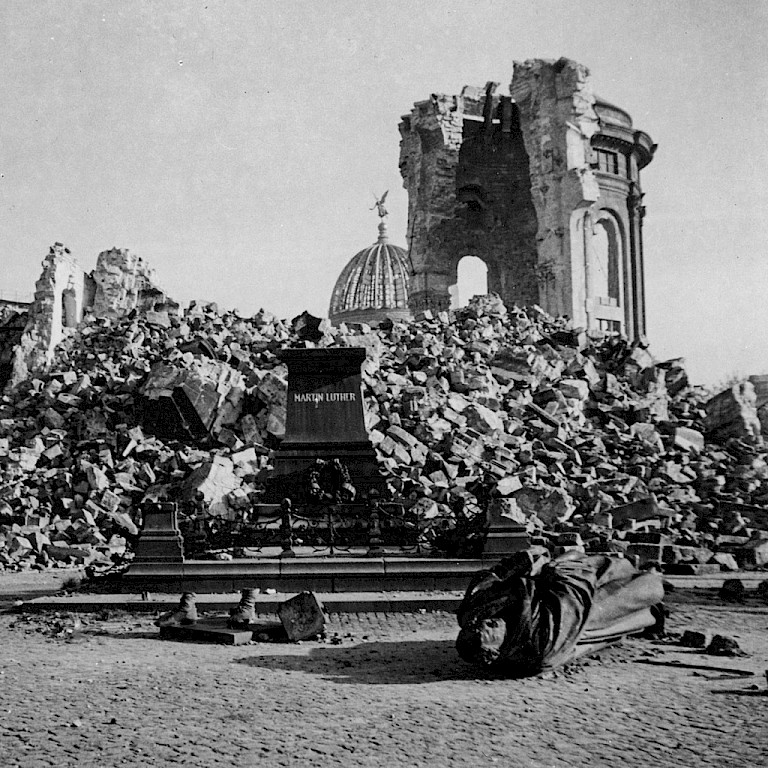
Blick vom Neumarkt gegen oben (links) Rathaus und (rechts) Kreuzkirche. Vorn links die Trümmer der Frauenkirche. 1945
Foto: © SLUB / Deutsche Fotothek / Andres, Erich

Dresden. Zerstörtes Lutherdenkmal vor der Ruine der Frauenkirche. 1945
Foto: © SLUB / Deutsche Fotothek / Peter, Richard sen
Filmausschnitt: Dresden nach dem 13. Februar 1945
© Filmarchiv Hirsch-Film Dresden
10 DRESDEN AFTER THE AIR RAIDS
The night and day attacks transformed the city centre between the southern suburbs and the Albertplatz Square into a landscape of rubble. Major search and rescue operations were already underway on the 14th of February. Fires, falling parts of buildings and unexploded bombs posed a threat. In addition, rescue operations were repeatedly interrupted by air raid alarms.
Dresden’s city authorities were faced with enormous tasks: debris had to be removed to clear the way for the injured. Tens of thousands of survivors were “bombed out” and lost their homes and possessions in the attacks. Emergency shelters had to be created for them.
Around 80,000 dwellings were destroyed. In the first days after the air raids, no one could estimate how many people had lost their lives or were still trapped under bombed buildings.
With great effort, the dead began to be recovered from cellars and destroyed houses.
Prisoners of war and forced labourers were also used for recovery and burial. The capacity limit of the cemeteries in Dresden reached its limit after about 10 days. Bodies that had been collected on the Old Market Place were then burnt there due to a danger of epidemics.
In the official final report of the 15th of March 1945, the total number of those killed in the February attacks is estimated at “about 25,000”. Other official reports confirm this figure. This unbelievable high amount of human loss was immediately misused by the National Socialists for propaganda purposes: they claimed that the actual number of victims was ten times as high.
After years of thorough research, a commission of historians determined in 2010 that up to 25,000 people died in the air raids of the 13th and 14th of February 1945.
There is no way of expressing the suffering and pain endured by those killed, wounded and the survivors who lost friends, neighbours, and acquaintances and who also faced an uncertain future. Anyone who experienced Dresden’s catastrophe would not forget it for the rest of their lives.